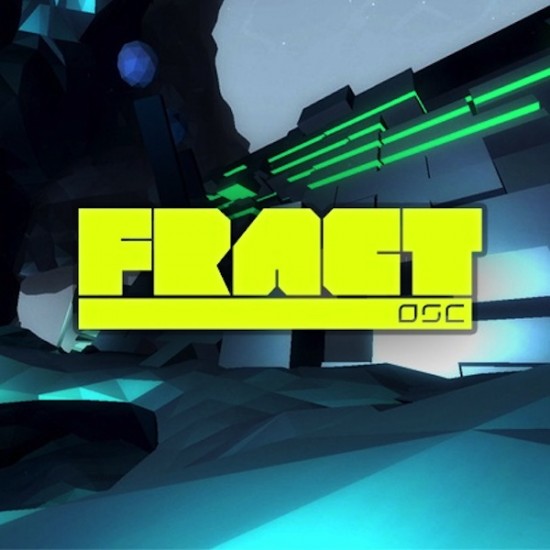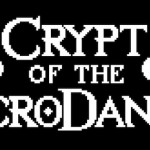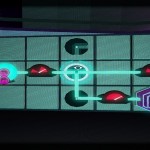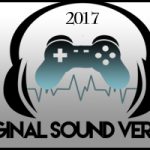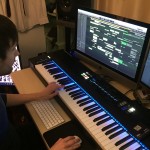Our second PAX East 2014 preview looks at the indie game FRACT OSC. The game was developed by Phosfiend Systems, a team comprising of Richard E Flanagan, Quynh Nguyen, and Henk Boom. FRACT OSC is a first-person music exploration game. While it has exploration elements similar to games like Myst and Riven, the puzzles in this game all center around music. Not only do the puzzles require you to use your listening abilities to help you solve them, the puzzles themselves also generate the game’s soundtrack.
When I started up a game in FRACT OSC, I was dropped into a mysterious, cavernous environment. In this section, the game’s simple controls and interactions were explained. By right clicking with the mouse I entered a mode that allowed me to analyze and manipulate elements of the environment. Outside of this mode, I could just walk around and explore the area. Most of these interactions involved moving slide bars, pushing switches, or dialing frequencies. Each push of a switch or activation of a device caused a pattern of music to start playing. As more puzzles in the area were solved and activated, the individual music elements began to combine and change to form a complete piece of music.
The visuals are also incorporated into the music’s build up as well. As you solve and turn on more devices, they light up in bright neon colors. Different parts of the buildings and puzzles light up when the music plays. This gives the game an aesthetic similar to Tron. Lots of bright fluorescent colors against darker backdrops. When I shifted and moved a specific puzzle element around, the structure of a specific music element changed with it. The game and puzzles essentially act like a massive synthesizer that the player is interacting with. By the time that I finished solving a puzzle, each element had undergone multiple variations that eventually led up to a final version of the piece.
Each area that I explored had it’s own unique set of puzzle mechanics. One area focused on the use and creation of arpeggios, while another area I went to had more emphasis on sustained tones. From what I was able to see during my playthrough, there were at least three distinct areas. Each of the areas corresponding to one of the three neon colors present in the game. I did see a few sections where more difficult variations of previous puzzles were being used, so I expect that the game will get quite challenging later on.
I had the chance to speak with the game’s music composer Alex Taam, aka Mogi Grumbles. Of particular interest to me was how they went about incorporating music that the player can constantly manipulate and interact with throughout the game. Taam told me that one of the things they did, to keep things simple, was keep all of the pieces of music in the same key. The game soundtrack is, for the most part, always in C pentatonic minor. This makes it easier to avoid having separate elements of music clash against each other in non-musical ways. The way the puzzles and game are structured, the player slowly starts building a score that evolves and grows as the player progresses.
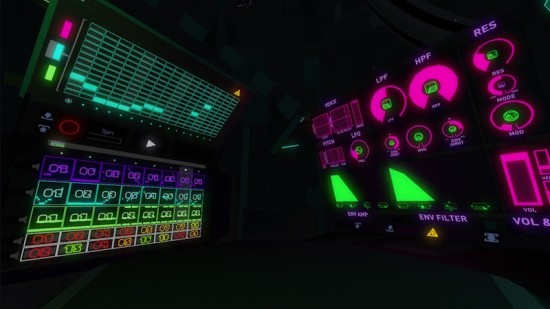
One of the other features that was shown to me, before I ended my play session, was the FRACT studio. This area allows you to use any of the synths and effects that you’ve unlocked from solving the game’s puzzles. You can use these tools to make your own music and even export it as an audio file. It’s an interesting feature that will likely add some more incentives to exploring and unlocking every section of the game.
FRACT OSC is a game that definitely caters to my puzzle and exploration game interests. It has an appealing aesthetic that works especially well when accompanying the music. The interactive elements of the music within the game world is a fascinating concept, and I’ll be interested to see what else this game has in store. FRACT OSC is set for release on April 22nd and will be playable on GoG, Steam, PC, Mac, and the Humble Store. We’ll have a full review of the game next week, when the game launches.
Tags: Alex Taam, Features, FRACT OSC, Henk Boom, Indie Music, Mogi Grumbles, PAX East 2014, PAX-East, Phosfiend Systems, Quynh Ngyen, Richard Flanagan





























